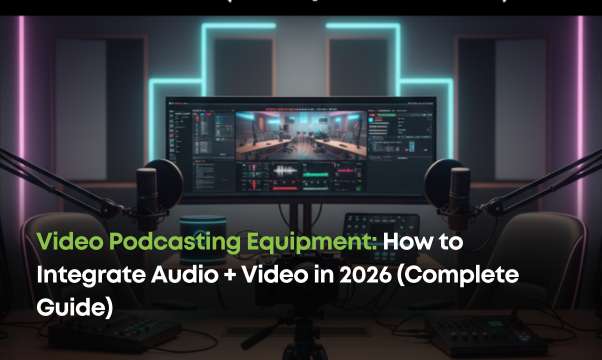How to Transcribe Interviews for Effective Qualitative Data Analysis
Mar 20, 2025, Nishi SinghLearn how to transcribe interviews
accurately for qualitative research. This guide from myTranscriptionPlace
explains why transcription matters, explores manual, automated, and
professional methods, and offers tips to enhance data accuracy, coding, and
analysis. Perfect for researchers balancing qualitative and quantitative
approaches.
The Role of Transcription in Qualitative Research
In-depth interviews are a powerful method
for gathering data in qualitative research. However, accurate and
efficient transcription is key to extracting maximum value from these
conversations.
Transcribing interviews converts spoken content into written text, allowing
researchers to analyze qualitative data in-depth, uncover patterns, and
generate meaningful insights.
Without accurate transcripts, quotes and
narratives may be misinterpreted or lost, ultimately affecting the quality of
your research findings.
What Is Interview Transcription in Qualitative Research?
Qualitative research focuses on understanding human experiences, behaviors, and
perspectives. Unlike quantitative research, which emphasizes numerical data and
statistics, qualitative methods deal with text, speech, or visual content.
Transcription bridges the gap between raw audio and structured written data, enabling
systematic qualitative data analysis.
By transcribing interviews, you create a
complete, searchable record that makes it easier to code, categorize, and
interpret data. While quantitative researchers rely on graphs and charts, qualitative
researchers depend on rich, detailed transcripts to identify recurring themes
and insights.
Why Accurate Transcription Matters for Qualitative Data Analysis
1. Ensuring Accuracy in Data Interpretation
Accurate transcripts provide a
word-for-word account of the conversation, reducing guesswork and ensuring that
your findings reflect authentic participant perspectives.
2. Facilitating Coding and Thematic Analysis
Transcripts simplify the coding process,
allowing you to label and organize text into categories or themes for easier
identification of trends.
3. Enabling Comparison across Datasets
When working with multiple interviews,
transcription enables systematic comparison across participants, ensuring no
content is overlooked during analysis.
4. Record Keeping and Transparency
Transcripts serve as a permanent
research record, improving transparency and reliability during peer reviews
or audits.
Step-by-Step Process to Transcribe Interviews Effectively
Step 1 – Prepare for Transcription
Gather all necessary materials: audio or
video recordings, transcription software, and templates. Ensure recordings are
clear to minimize transcription errors.
Step 2 – Choose the Right Transcription Method
You can choose among three primary methods
depending on time, budget, and accuracy needs:
- Manual Transcription: Type every
word manually while listening. Time-consuming but offers the highest
accuracy.
- Automated Transcription: Use
AI-powered tools like myTranscriptionPlace’s automatic transcription
service for quick drafts.
- Professional Transcription Services: Ideal for researchers who need both accuracy and efficiency.
Professional services combine technology and expert editing for best
results.
Step 3 – Maintain a Consistent Format
Use a structured format with timestamps
and speaker labels for clarity.
Example:
[00:05] Interviewer: Can you describe your
experience with online education?
[00:10] Participant 1: Sure! Online
learning has made education more accessible from anywhere.
Step 4 – Listen Actively While Transcribing
Pay attention to tone, pauses, and emphasis
— these subtle cues often reveal deeper insights in qualitative analysis.
Step 5 – Edit and Review Thoroughly
After completing your transcript, review it
to fix errors, verify unclear words, and ensure formatting consistency.
Tips for Faster and More Accurate Transcription
1. Transcribe Interviews Promptly
Transcribing soon after the interview helps
recall details and minimizes interpretation errors.
2. Invest in Quality Recording Equipment
Clear audio reduces time spent deciphering
unclear words or noise.
3. Break the Process into Segments
Divide long interviews into smaller
sections to prevent fatigue and improve focus.
4. Learn Keyboard Shortcuts
Shortcuts for pausing, rewinding, or
slowing playback can significantly increase speed during manual transcription.
Transcription Beyond Qualitative Research
While transcription is vital in qualitative
research, it’s equally valuable in mixed-method and quantitative
studies.
For example, interviews can complement survey data by adding narrative context to numerical results. Together, qualitative and quantitative methods provide a more holistic understanding of the research subject.
How myTranscriptionPlace
Simplifies Qualitative Data Analysis
At myTranscriptionPlace, we
understand that accurate transcription is the foundation of credible research.
By combining Generative AI, experienced
human transcribers, and optimized workflows, we deliver high-quality
transcripts and analysis faster than traditional methods - often within days.
Partner with us to elevate your qualitative
research, streamline your data analysis, and present insights that make a
lasting impact.
Our popular Services
Human Transcription
| Automatic
Transcription | Interactive
Transcription | Human Translation
| Spanish
Transcription | Focus
Group Transcription Services | Qualitative
Data Analysis | Medical
Transcription Services | Technical
Translation Services | Closed
Captioning Services | Accurate
Transcription Services | Video
Transcription Services.






